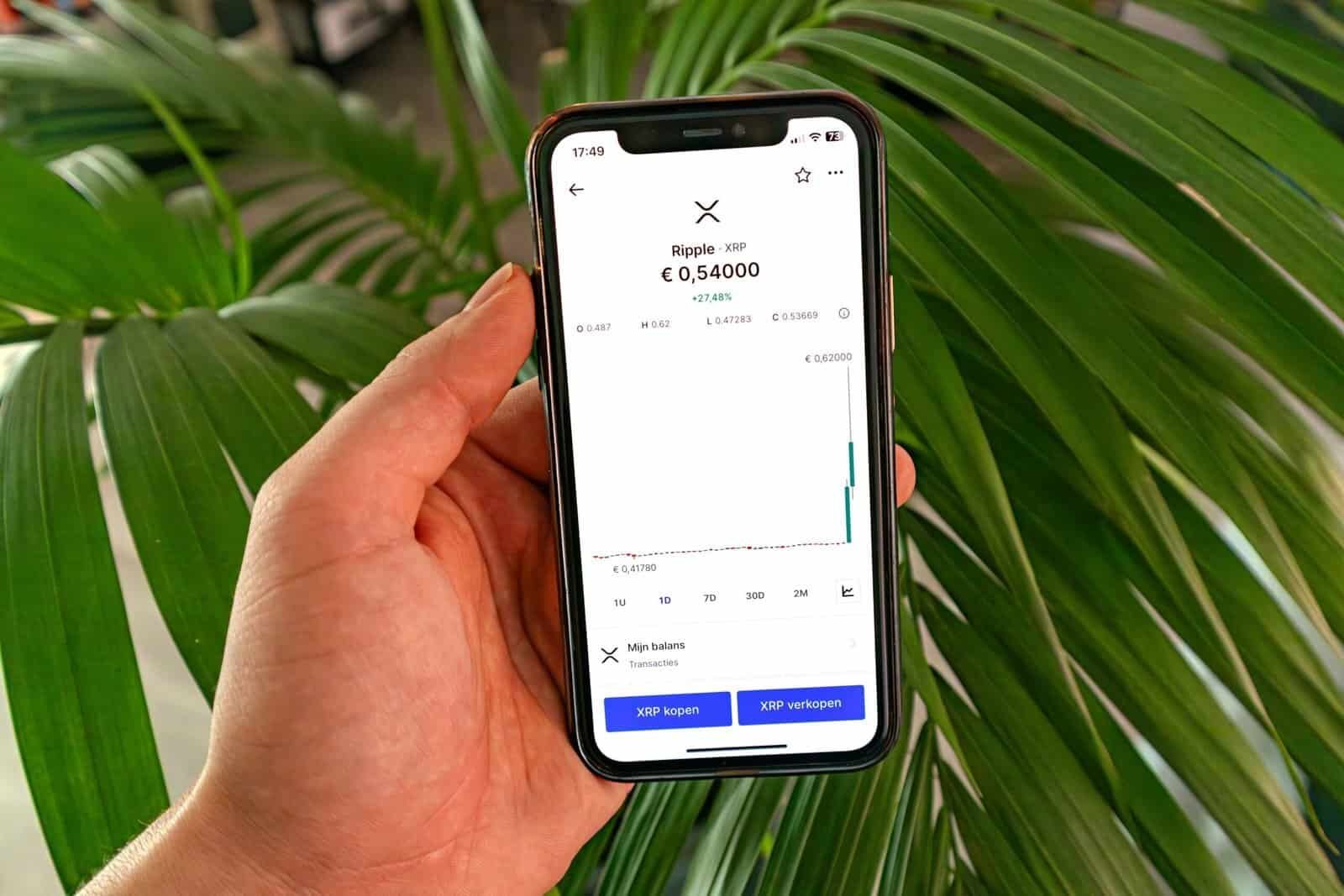Which exchange will execute your order in the blink of an eye when markets turn on a dime?
What Are The Fastest Crypto Exchanges For Trading?
You want to know which exchanges will execute your trades fastest and why that speed matters. This article breaks down the technology, the practical metrics, and the best exchange choices for different trading styles so you can pick the platform that fits your needs.
How You Should Define “Fast” in Crypto Trading
Speed means more than just the number shown on a latency test. You need to think about matching-engine latency, API response time, settlement finality, internal transfer speed, and the time it takes to move funds in and out of fiat rails. Each of those factors affects how quickly you can enter, adjust, and exit positions.
Speed also interacts with liquidity and slippage. A platform that executes your order quickly but with poor market depth can still produce a bad result. You want to evaluate speed together with execution quality and reliability.

Why Speed Matters: Use Cases
If you’re a scalper or high-frequency trader, microsecond-to-millisecond differences in latency can mean the difference between profit and loss. Fast order matching reduces missed opportunities and lowers slippage on market orders.
For arbitrage or market-making, speed determines how well you can capture price differences across venues and manage inventory risk. Even manual traders benefit: quicker fills reduce exposure to sudden moves and make your risk management more dependable.
Key Speed Metrics to Watch
You should monitor several metrics to assess how fast an exchange is in practice:
- Latency: time between sending an order and receiving an acknowledgement. Lower is better.
- Throughput (orders per second): how many orders the exchange can handle simultaneously.
- Fill time: how long it takes for an order to fill, fully or partially.
- Internal transfer speed: time to transfer between accounts within the same exchange (often instant).
- Withdrawal/Deposit finality: blockchain confirmation time or fiat settlement time.
- API reliability and rate limits: how often requests are throttled or denied.
Measuring these gives you a multi-dimensional view of speed; a single number rarely tells the whole story.

Centralized Exchanges (CEX): Fastest Choices
Centralized exchanges often provide the lowest latency and largest order-book liquidity because they use dedicated matching engines and can offer internal transfers. They are typically the go-to for traders who need rapid fills and consistent order-book depth.
Below is a comparison of major centralized exchanges that are widely used for fast trading. The qualitative ratings reflect typical performance for order execution and API responsiveness as of mid-2024; you should validate current performance before committing capital.
| Exchange | Matching Engine / Throughput | API Latency & Reliability | Internal Transfer Speed | Fiat On/Off Speed | Best For |
|---|---|---|---|---|---|
| Binance (Spot & Derivatives) | Very high — engineered for massive throughput | Low latency, mature APIs and websockets | Instant between Binance accounts | Fast with local rails in many countries | Scalpers, derivatives traders, high-frequency strategies |
| Coinbase Advanced / Prime | High — institutional-grade matching | Low-latency APIs, strong reliability | Instant intra-exchange transfers | Fast in the U.S./Europe where supported | Institutional and retail traders who prioritize security + speed |
| Kraken | High — solid for spot and margin | Generally low latency, good APIs | Instant internal transfers | Good fiat rails in supported regions | Spot traders and margin users focused on reliability |
| Bybit | High — focused on derivatives throughput | Low latency APIs, strong WS feeds | Instant internal transfers | Fast with selected fiat partners | Perpetual futures and aggressive derivatives trading |
| OKX | High — competitive matching and derivatives | Low latency APIs, multi-protocol access | Instant transfers within OKX | Fast in supported markets | Global derivatives traders and active spot traders |
| KuCoin | High for spot, improving derivatives | Stable APIs, moderate latency at peak | Instant internal transfers | Variable fiat speeds depending on partner | Retail and margin traders seeking varied token lists |
You should test API latency and fill speed on your own account and region. Geographic distance to the exchange’s servers and the route your packets take will affect real-world performance.
How CEXs Achieve Speed
Centralized exchanges use optimized matching engines written in low-level languages, colocated data centers, trade routing optimizations, and internal settlement systems that bypass blockchain delays for internal balances. They also offer dedicated APIs and websocket streams that push market updates in near real time.
This architecture lets you send an order and see it matched and confirmed in milliseconds under normal conditions.
Limitations of CEX Speed
CEXs can still slow during extreme volatility due to order surges, protection mechanisms (circuit breakers), maintenance windows, and API rate limits. Also, fiat deposits and withdrawals involve banks and payment processors that operate much slower than the exchange’s internal systems.
Decentralized Exchanges (DEX): Fast and Low-Latency Options
If you prefer non-custodial trading, DEXs can be surprisingly fast when they leverage layer-2 (L2) networks or optimized settlement engines. Execution model differences (AMM vs order book) change the experience: AMMs provide instant on-chain price execution but may incur slippage, while order-book DEXs on L2 can mimic CEX-like speed with custody advantages.
| DEX / Protocol | Execution Model | Layer | Finality / Settlement | Typical Speed | Best For |
|---|---|---|---|---|---|
| Uniswap v3 (on Arbitrum / Optimism) | AMM | L2 rollups | Fast finality via L2; sub-minute | Very fast for swaps on L2 | Spot swaps with immediate settlement and low gas |
| dYdX v4 | Order-book DEX | L2 (e.g., StarkEx / StarkNet) | Near-instant on L2 for orders | Very low latency, engineered for derivatives | Perpetuals/derivatives in non-custodial setting |
| 0x / Matcha | Relayer / Aggregator | Various L2s | Depends on settlement layer | Fast if routed through L2 liquidity | Best-price aggregation across DEX liquidity |
| GMX | AMM-perps (on Arbitrum) | L2 | Fast finality on L2 | Optimized for quick perp execution | Perps trading with decentralized custody |
| SushiSwap (on L2s) | AMM | L2 | L2 finality | Fast when on L2 | Cross-chain and L2 spot swaps |
When you trade on L2 DEXs, transaction latency is dominated by the L2 sequencer and block times rather than Ethereum L1 confirmations. You’ll often get near-instant UX for swaps and orders, but you’ll still be exposed to on-chain costs and occasional sequencer issues.
Pros and Cons of DEX Speed
You get instant custody control and transparent settlement, often with predictable latency on L2 networks. However, you must manage on-chain gas, approvals, and occasional reorgs or sequencer outages. Slippage and liquidity fragmentation across pools can also affect execution quality.

Matching Engine vs AMM: What Gives You Faster Fills?
Matching-engine (order-book) exchanges match orders internally against a centralized book, yielding fast fills and predictable price impact when liquidity is deep. AMMs compute prices algorithmically and settle on-chain or on L2, which can be instant but may result in variable execution quality due to slippage.
If you need predictable fills at precise price levels (e.g., limit orders), an order-book exchange—centralized or an L2 order-book DEX—will generally be faster and more reliable. For quick spot conversions between tokens without an order-book, AMMs on L2 can be effectively instant and convenient.
Network and Infrastructure: What You Can Control
Your own network setup strongly influences perceived speed. You control several levers that reduce latency:
- Choose a VPS or colocated host close to the exchange’s matching servers.
- Use websocket streams for market data rather than polling REST endpoints.
- Use binary/serialized protocols if the exchange offers them (some offer binary feeds for lower overhead).
- Keep order logic local and minimize round trips by batching or using limit orders when appropriate.
Small latency gains add up when you’re executing many orders per second. Evaluate the exchange’s geographic server distribution and whether you can colocate in the same region.
Colocation and VPS
If you’re running algorithmic strategies, colocating your trading engine in the same cloud region or data center as the exchange can cut latency by tens to hundreds of milliseconds. Many exchanges publish preferred regions or allow market participants to colocate.
If you cannot colocate, choosing a low-latency VPS in a nearby region and using a reliable internet provider helps.

How to Measure Exchange Speed Yourself
You should build a reproducible test plan:
- Ping the API and websocket endpoints for baseline network latency.
- Send small test orders and measure round-trip time from order submit to acknowledgement and then to fill.
- Record fill rates, partial fill frequency, and slippage under different market conditions.
- Test internal transfers by moving small amounts between accounts on the same exchange.
- For withdrawals, measure blockchain confirmation times and fiat settlement durations.
Collecting this telemetry over days or weeks will expose patterns like peak-hour slowdowns, maintenance windows, or rate-limit behavior.
Common Pitfalls That Slow You Down
Even on fast exchanges, these issues can reduce practical speed:
- KYC and account verification delays that prevent you from pre-funding accounts.
- Withdrawal cooldowns or manual review processes.
- API rate limits and request throttling during spikes.
- Circuit breakers or volatility halts that block execution.
- Bank or payment processor delays for fiat on/off ramps.
- Blockchain congestion for on-chain deposits/withdrawals.
Plan for these constraints by pre-funding accounts, splitting capital across exchanges, and automating failover strategies.

Practical Tips to Optimize Your Trading Speed
You can take multiple steps to reduce latency and improve execution quality:
- Pre-fund accounts on your primary exchanges to avoid fiat transfer delays.
- Use websocket feeds for real-time market data and limit REST calls.
- Place limit orders at desired price levels instead of market orders when you want predictability.
- Use internal transfers when moving funds between your accounts on the same exchange.
- Use L2 networks or exchanges offering L2 settlements for fast on-chain trading without expensive L1 gas.
- Keep an eye on API rate limits and implement exponential backoff and idempotency keys for retries.
- Monitor connection health and set up instant failover to a backup strategy or exchange.
- Consider multi-exchange routing through smart order routers to send orders to the venue with the best latency and liquidity at that moment.
These tactics reduce friction and keep you trading at speed when market opportunities arrive.
Trading Styles and the Optimal Exchange Choice
Your ideal “fast” exchange depends on your strategy:
- Scalping and HFT: A large CEX with colocated servers, a powerful matching engine, low latency APIs, and deep order books (e.g., exchanges known for strong derivatives/spot infrastructure).
- Arbitrage: Multiple fast venues and quick internal transfers. Using platforms with instant internal settlements reduces risk during cross-exchange price discrepancies.
- Derivatives/perpetuals: Platforms with optimized derivatives engines and low-latency websockets for mark price and funding updates.
- Non-custodial traders: L2 DEXs and L2 order-book platforms give you custody with near-CEX speeds in many cases.
- Institutional traders: Institutional desks and prime broker services often provide dedicated connectivity, FIX/API endpoints, and tailored routing for speed.
Match your platform to the demands of your strategy rather than chasing raw speed alone.
Security and Regulation: Speed vs Safety Trade-offs
Faster execution sometimes lives in environments with trade-offs. Some high-speed venues may be less regulated or carry higher counterparty risk. You should balance speed requirements with your tolerance for custodial risk, regulatory compliance, and the exchange’s track record for reliability and security.
If you prioritize safety and KYC protections, you may accept slightly higher latency for the benefits of regulatory oversight and asset protections. If speed is paramount and you’re comfortable with custody risks, advanced margin accounts and derivatives platforms may be appropriate—but consider splitting exposure.
Sample Workflows for Fast Trading
Here are practical workflows you can adopt to keep speed high:
Workflow: Rapid Spot Scalping on a CEX
- Pre-fund an account in the exchange’s native stablecoin or USD balance.
- Connect via websocket for order book updates and execution confirmations.
- Run your logic on a colocated VPS close to the exchange region.
- Use limit orders at aggressive price levels; cancel and resubmit only when necessary.
- Monitor connection health and automatically switch to a secondary exchange if latency degrades.
Workflow: Non-Custodial Perpetuals on L2
- Bridge funds to an L2 with trusted bridges and pre-fund your L2 wallet.
- Use an L2-native order-book DEX (or AMM with leverage) that supports rapid fills.
- Use RPC providers optimized for the L2 and keep smart contract approvals pre-signed.
- Monitor sequencer health and use fallback routes if order execution stalls.
These workflows emphasize pre-funding, local infrastructure, and redundancy—three pillars of fast, resilient trading.
How Regulators and Market Events Affect Speed
Market halts, regulatory inquiries, or security incidents can produce sudden slowdowns or forced pauses. Exchanges may impose withdrawal freezes during investigations, or impose temporary rate limits during coordinated attacks. You must factor these possibilities into your contingency plans and capital allocation.
For institutional traders, prime brokers often provide regulated custody and legal protections that can both reduce some risks and occasionally add compliance-related delays.
Common Myths About Exchange Speed
- Myth: “The fastest exchange always gives the best execution.” Reality: Fast execution without liquidity or narrow spreads can still lead to poor results due to slippage and market impact.
- Myth: “DEXs are inherently slow.” Reality: L2-enabled DEXs and order-book DEXs can achieve near-CEX latency and instant UX for many use cases.
- Myth: “You can fix bad strategy problems by choosing a faster exchange.” Reality: Strategy quality, risk controls, and execution logic often matter more than shaving off a few milliseconds.
Understand that technology is an enabler, not a substitute for sound trading discipline.
How to Build a Speed Testing Routine
Set up these automated monitors:
- Ping and traceroute tests to API endpoints every minute.
- Latency and fill-time tests using micro-orders at low size to simulate real orders.
- A dashboard that tracks 95th and 99th percentile latencies rather than averages.
- Alerts for increases in partial fills, slippage, or websocket disconnects.
Test across multiple times of day and during high-volatility events to stress the system. Continuous monitoring alerts you to degradation before it affects live positions.
Case Study Examples (Generic)
Consider two hypothetical traders:
- Trader A uses a colocated server with a large CEX and gains tens of milliseconds advantage, enabling tighter scalping strategies. Trader A manages risk by keeping collateral across multiple exchanges.
- Trader B uses L2 DEXs for perps and benefits from custody and near-instant settlement while avoiding bank rails. Trader B focuses on strategic edge and avoids high-frequency cycles, preferring price certainty and custody control.
Both approaches can be successful; the difference is how each trader balances latency, custody, and risk.
Checklist Before You Commit Capital
Make sure you:
- Verify the exchange’s API latency from your location and use-case.
- Test order fill times during normal and volatile periods.
- Confirm internal transfer speeds and fiat withdrawal timelines.
- Review KYC and withdrawal rules to avoid surprises.
- Assess security practices and the exchange’s track record.
- Consider splitting capital across multiple venues to diversify execution risk.
A disciplined checklist prevents avoidable errors when speed matters most.
Final Recommendations: Which Exchange For Which Trader
- If you need maximal raw execution speed and deep liquidity for spot and derivatives, prioritize major centralized exchanges with low-latency APIs and strong matching engines. Pre-fund accounts and colocate if you run automated strategies.
- If you want custody while still trading fast, prefer L2 order-book DEXs or L2 AMMs on Arbitrum/Optimism/StarkNet. They offer near-instant UX with non-custodial security.
- If you trade less frequently or prioritize regulatory cover and fiat rails, choose exchanges with strong compliance and solid APIs even if they are slightly slower.
- For arbitrage, always diversify across several fast exchanges and use instant internal transfers to reduce execution risk.
Tailor your platform choices to your trading horizon, risk tolerance, and preferred custody model.
Closing Thoughts
Speed is a powerful advantage when used correctly, but it’s only one part of a broader trading system. You should pair fast infrastructure with robust risk controls, good liquidity analysis, and redundancy across venues. Test thoroughly, monitor continuously, and keep your contingency plans ready so you can capitalize on fast markets without exposing yourself to unnecessary operational or custodial risk.
If you want, you can tell me your trading style (scalping, arbitrage, market-making, long-term spot, derivatives) and I’ll recommend a shortlist of exchanges and concrete steps to test latency and execution for your setup.
